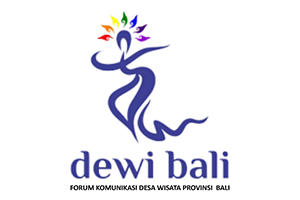The Role of Stakeholders in The Perhutani Puncak Area Bogor District, West Java
Abstract
Part of the North Tugu tourist village consists of forests, mountains, bays, waterfalls and plantations which are in conservation areas. The village has various problems related to tourism management. Some of the obstacles experienced by the organizers were the existence of several policies that conflicted both practically and constitutionally. This research aims to map tourist interest regarding management involving several stakeholders, such as Perhutani, Forest Village Community Institutions, Tugu Utara Tourism Village, Village-Owned Enterprises, PT Sumber Sari Bumi Pakuan (SSBP). The method used was descriptive qualitative, by conducting interviews with 7 (seven) informants, observation and document study. The analysis tool used is NVivo R1-7. The results of the analysis show that the management of the North Tugu Tourism Village is at the involvement stage towards the development stage. This research resulted in the identification of the roles of stakeholders, based on management collaboration, it appears that Forestry and Tourism Villages play a significant role as managers who are directly involved technically. The stakeholder collaboration aims to preserve the natural sustainability of the North Tugu Tourism Village and improve the welfare of the community in the forest area.
Downloads
References
Dawson, C. P. (2001) Ecotourism and nature-based tourism: one end of the tourism opportunity spectrum? In S. F. McCool and R. N. Moisey (eds), Tourism, Recreation and Sustainability: Linking Culture and the Environment, NY, CABI Publishing, pp. 41–53
Ghony, M. D., & Almanshur, F. (2012). Metodologi penelitian kualitatif. Jogjakarta: Ar-Ruzz Media, 61, 177-181.
Gibson, L., James, Ivancevich, M.John, and Donnelly, H.James, Jr. (2000). Organization, Behavior, Structure, Processes. Tenth Edition, Irwin McGraw–Hill Inc. USA.
Gunawan, I. (2013). Metode penelitian kualitatif. Jakarta: Bumi Aksara
Hetifah, S. (2003). Inovasi, Partisipasi, dan Good Governance: 20 Prakarsa Inovatif dan Partisipatif di Indonesia. Yayasan Obor Indonesia.
Huang, C., & Confer, J. (2009). Applying the tourism opportunity spectrum model in nature-based tourism management. Managing Leisure, 14(4), 247-257.
Molla, Y., Supriatna, T., & Kurniawati, L. (2021). Collaborative governance dalam pengelolaan kampung wisata praiijing di desa tebara kecamatan kota waikabu-bak kabupaten sumba barat. Jurnal Ilmu Pemerintahan Suara Khatulistiwa, 6(2), 140-148.
Nasution. (2007). Perilaku Merokok pada Remaja. Program Studi Psikologi Fakultas Kedokteran Universitas Sumatra Utara: Medan
Noviarita, H., Kurniawan, M., & Nurmalia, G. (2021). Analisis halal tourism dalam meningkatkan laju pertumbuhan ekonomi di provinsi Lampung. Jurnal Ilmiah Ekonomi Islam, 7(1), 302-310.
Permatasari, D. N. C. (2021). Strategi Pengembangan Ekowisata Danau Kaenka Berdasarkan Komponen 4A Di Desa Fatukoto, NTT. In Journey: Journal of Tourismpreneurship, Culinary, Hospitality, Convention and Event Management, 4(1), 1-18.

This work is licensed under a Creative Commons Attribution 4.0 International License.
The copyright of the received article shall be assigned to the journal as the publisher of the journal. The intended copyright includes the right to publish the article in various forms (including reprints). The journal maintains the publishing rights to the published articles.




















